This article is based on a presentation given by Karim at the Customer Success Festival Amsterdam in May 2023.
Catch up on this presentation, and others, using our OnDemand service. For more exclusive content, visit your membership dashboard.
Customer success isn't just a metric; it's an ethos that guides transformative interactions and leaves lasting imprints on our clients. In the dynamic landscape of software solutions, where options abound, it's the genuine, creative, and strategic engagement with clients that distinguishes a brand and sets it apart.
I'm Karim Hambach, Sr. Customer Success Manager at Adobe, and through my tenure, I've charted a course that weaves data, technology, and innovation to drive authentic customer experiences.
In this article, I'm going to share the pivotal strategies and personal touches that make Adobe not just a solution provider, but a partner in our clients' success stories.
Elevating customer experiences: My journey with Adobe
My personal experience from my time at Adobe is a story of transformation, of turning challenging customer accounts into thriving multi-million dollar partnerships.
Picture this scenario: You’re diligently working on a healthcare customer base spanning between London and Amsterdam. Simultaneously, you find yourself collaborating with a prominent telecommunications firm based right here in the Netherlands.
Both these entities, despite being strategic on paper, exhibit familiar challenges – siloed structures, looming budget cuts, evolving priorities, and an overarching shift in resources. Their stories echo similarities, with parallel goals and strategies. Yet, despite being seemingly strategic partners, supporting them in their digital transformation journey can be an uphill task.
The global onset of COVID-19 only accelerated the transformational challenges. With many customers hastily adapting to the new normal, these organizations even went to the extent of threatening to cancel their contracts, citing reasons such as low pricing and adoption. It begs the question:
Why invest more time and resources in these accounts? Why not simply decide that the effort doesn't align with the payoff?
However, here's the remarkable part: we turned the narrative around. These accounts, once characterized by minimal engagement and value, metamorphosed into fruitful, multi-million dollar partnerships. These transformations weren't merely transactional but were built on mutual respect, collaboration, and a shared vision for the future.
Navigating the challenges of customer success
Does low engagement and hesitance from customers indicate a failure in customer success? We often find ourselves grappling with this very question.
Envision this:
You're faced with customers who seem increasingly disengaged, reluctant to actively collaborate, their focus diverted by shifting budgets, internal politics, and external competition.
Often, we find ourselves yearning for key stakeholders, the essential sponsors, to champion the cause. Yet, as customer success managers, the path to securing such commitment can seem like an insurmountable challenge.
To compound the situation, we're often caught in the whirlwind of escalating issues. A barrage of tickets comes our way, each demanding immediate attention, and resolutions that were due "yesterday." This urgency often diverges our conversations from value-based engagements to purely transactional pricing discussions.
While the broader industry might be inclined to haggle over the price, our vision at Adobe is to underscore the intrinsic value behind our solutions. We pride ourselves on offering premium solutions, ensuring our customers recognize and appreciate the unparalleled value they bring.
However, these circumstances create a perfect storm, especially when contract renewals loom on the horizon.
Picture this:
You're six months away from renewing a significant customer contract. Instead of engaging in a dialogue about the unparalleled value you offer, the conversation veers towards comparisons with competitors and relentless price negotiations. For a Customer Success Manager (CSM), this is the proverbial nightmare scenario.
So, the pertinent question arises: How do we innovate from this juncture?
To answer this, we first need to delve deeper into the reasons that have led us here.
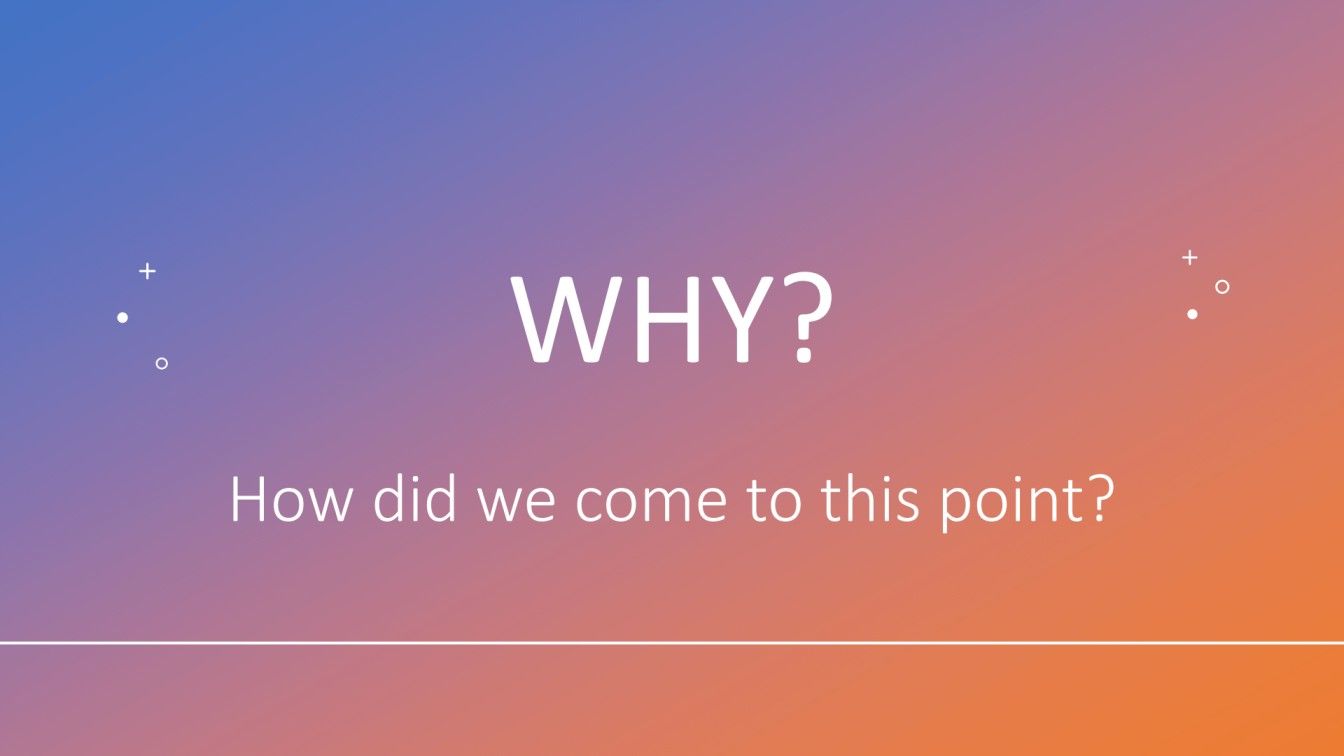
Understanding the underlying factors causing customer disengagement is pivotal. Only when we comprehend why customers are reluctant to discuss expanding their strategic footprint with our solutions can we truly innovate and rebuild those invaluable relationships.
The true cost of customer acquisition vs. retention
It costs five times more to acquire a new customer than it does to retain an existing one. The effort, resources, and financial outlay required to bring in new customers is quintuple the amount needed to nurture and maintain our existing relationships.
This underscores why there's immense pressure on businesses to retain customers. The numbers further elucidate this: by merely reducing customer defection by 5%, businesses can potentially increase customer profitability by a whopping 25%. These aren't just incremental percentage points; these are game-changing figures.
To put it in another perspective, a modest 2% increase in customer retention yields the same benefit as cutting costs by 10%.
By retaining customers, we're not just preserving a business relationship for the short term. We're investing in the increased profitability that accrues over the entire lifetime of that customer's association with our brand. Given these statistics, it's hardly surprising that most organizations pull out all stops to ensure they hold on to their clientele.
Many of us feel this pressure, akin to being pinned with our backs against the wall. But before the weight of these challenges becomes too daunting, I have a message for you: Don't fret. There's a way forward.
Harnessing the power of data and tools
At Adobe, as is the case with many who engage with SaaS solutions, we are in a privileged position. We have access to a veritable treasure trove of data.
Millions of contact points lie at our fingertips, offering powerful real-time insights. These insights grant us the ability to make predictive analyses, from forecasting trends to pinpointing surges in traffic or conversion rates.
Think of events like Black Friday; we can anticipate them and formulate strategies accordingly to optimize revenue, boost conversion rates, and launch timely campaigns.
But it doesn't stop there. Our toolkit is further enhanced by cutting-edge AI-driven tools and models. The capabilities of AI in this realm are vast, and from a customer success standpoint, the tools at our disposal are plenty.
We're equipped with value-based conversation playbooks and strategic account planning tools. These resources empower us to collaborate seamlessly with our account teams, pondering and strategizing on ways to amplify our engagement with customers.
But do we truly need all these tools? It's essential to ask this, especially as we consider other utilities at our disposal, such as maturity assessments.
When a new customer joins our fold, it's crucial to gauge their level of maturity in their digital transformation journey. This understanding lays the groundwork for formulating subsequent strategies. To aid this, we have collaborative platforms and a plethora of other tools.
Yet, with such an extensive list, it's easy to feel overwhelmed. A German adage comes to mind: "You can't see the forest for the trees."
Essentially, with the multitude of tools and resources at hand, the bigger picture can sometimes be obscured. But imagine these tools as pieces of a puzzle. The challenge and opportunity lie in understanding how to fit them together optimally.
Rediscovering creativity and purpose in customer relations
Cast your mind back to those formative years in school. We were instilled with the promise that, as adults, we would lead lives filled with success, creativity, and enjoyment. Yet, it's ironic how many of us find ourselves ensnared in the monotony of our daily routines.
Our days often unfold in predictable patterns: waking up, heading to work, attending meetings, monitoring customer data, maintaining strategic success plans, assessing customer health, escalating tickets, and so on. But is this the life we envisioned?
Do any of us truly aspire to be perpetually anchored to our desks, bound by the chains of routine? Where has that promised creativity and fun factor evaporated?
A few years ago, I decided that this would not be my life. I refused to be confined to this mold, and it all boiled down to one paramount question: What is the issue at the heart of the customer's concerns? Why would a customer prioritize a discussion about pricing over understanding the unique value we bring to the table?
A poignant reminder of this came from one of my major clients who candidly remarked:
"You can boast the finest products and processes in the world. But if you're not truly listening to us, we might just have to consider your competitors."
That feedback, especially coming from such a significant client, was a tough pill to swallow. It led me to reflect deeply on our approach: where were we faltering, and more importantly, what could we do to set things right?
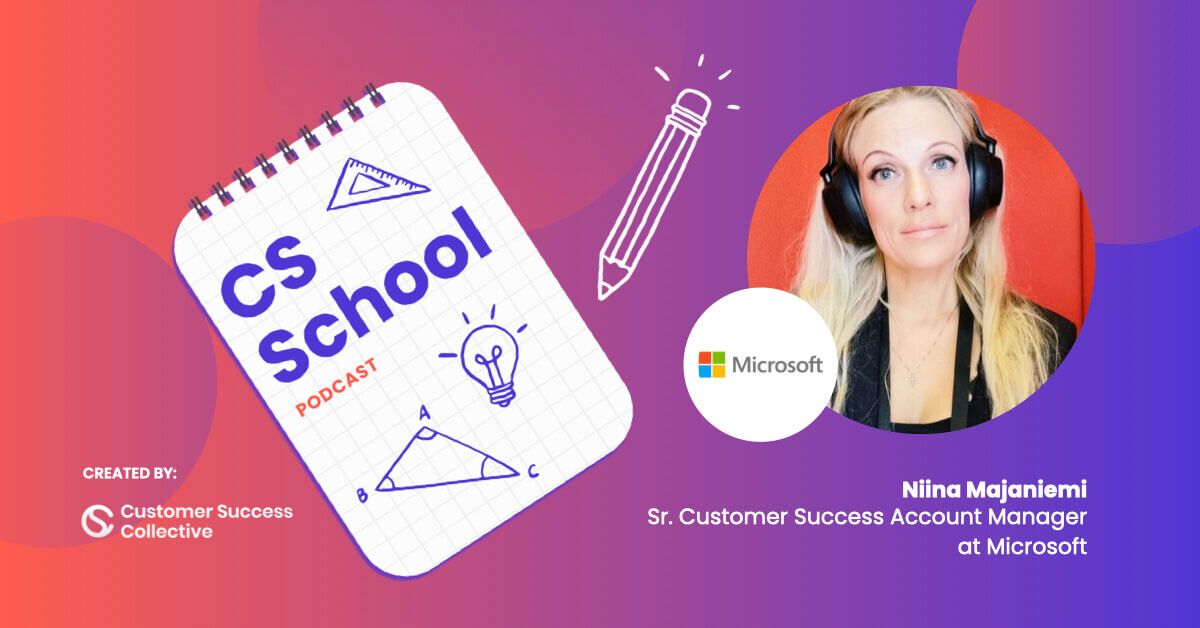
Cultivating success: Balancing data with humanity
How do we address these challenges? It's time we reevaluate our definition of cultivating success.
While data, processes, and frameworks undeniably play a pivotal role in customer success, they shouldn't overshadow the importance of personal interaction and understanding. The essence of our role isn't just about navigating through countless meetings; it's about genuinely discerning the needs and challenges our customers face.
Once we identify these issues, we can then effectively employ our array of tools and data to address them.
To be clear, I'm not downplaying the significance of the data we possess or the tools we utilize. They are immensely valuable. However, our primary focus should be to truly grasp the heart of our customer's issues. Once we've done that, it's then a collaborative journey. We can either take a step back and reassess our strategy or in tandem with our customers, chart out the next phases.
Looking ahead, consider this:
Where do you envision your digital transformation journey in five years?
It's essential we lay the groundwork now, always keeping the human touch at the forefront of our customer relations.

Reinventing with creativity: Marrying data with the arts
What's the missing ingredient in our arsenal of tools, processes, and data? It's creativity.
I've always held the belief that creativity is the secret sauce, enabling us to harness our vast reservoir of data and tools in the most imaginative ways. When I joined Adobe in 2015, I was imbued with this vision. I discussed with my management the need to shake things up, to do things differently. I saw Adobe as the perfect platform where data and science could harmoniously intersect with the arts.
The headlines these days are abuzz with tales of AI artists revolutionizing industries. From AI-composed songs making waves in the music industry to the seismic shifts AI is causing in photography, the landscape is undeniably evolving. We're on the brink of a renaissance, and the repercussions will unfold over the coming weeks, months, and years. To thrive, we must innovate in sync with these paradigm shifts.
The key is not merely to innovate but to do so creatively. We should be aiming to surprise and delight our customers at every turn. In every interaction, be it team meetings or customer engagements, I always aim to inject a hint of creativity, a little something to elicit a smile.
Sure, we're all familiar with icebreakers and their role in forging connections. But it's about more than just breaking the ice. It's about cultivating trust. Without trust, we become stagnant, confined to our monotonous routines, unable to truly innovate and evolve. We need to ensure that we never find ourselves trapped in that cycle.

Five tips to amplify customer success with creativity
Here are five quick tips on how I work on making a positive difference with my customers, and how you can induce the ingredients to make customers successful with creativity.
1. Personal branding through interaction
Before you can make a meaningful impact, you must establish your presence. Ensure that your name becomes synonymous with value and expertise in your interactions. It's not just about making an impression on your customers, but also on colleagues, partners, and any other stakeholders. With creative branding, you not only get remembered but also become integral to their operations.
2. Embrace the power of listening
It might sound simple, but the act of asking questions and then genuinely listening can work wonders. Allow your colleagues, partners, sales teams, and especially your customers to share their thoughts. As you let them speak, take diligent notes. Their insights can often lead to actionable strategies.
3. Translate knowledge into action
Once you've gathered all that valuable information from your interactions, it's time to act. Kick your team into ideation mode, brainstorming creative solutions tailored to the specific needs and pain points you've identified. Remember, knowledge without action remains dormant potential.
4. Engage authentically
Communication shouldn't be limited to mere email exchanges or sending out links. True engagement means remaining visible and accessible to your customers. It's about being there, checking in, and genuinely being interested in their progress and concerns.
5. Reaffirm and confirm
Post-discussions, always take a moment to summarize and confirm the discussed points. It reinforces your attention to detail and ensures that both you and your customer are aligned in terms of expectations and next steps. This little step can save a lot of confusion down the line and solidify trust.
Incorporating these tips into your interactions can redefine your relationship with stakeholders and infuse creativity into customer success.
Maximizing engagement through creative presentations and collaboration
Personalized introduction slide
While most professionals have introduction slides, it's essential to go a step beyond the conventional. Instead of just naming your company, why not incorporate its logo? Pair that with a professional (or casual, depending on your audience) photo of yourself.
Utilizing AI technology for a personalized touch, such as welcoming them based on their location, can make your presentation stand out. Adding quirky or fun information about yourself or your organization can also make it more memorable.
Relevant imagery
When introducing processes or discussing new concepts, it's always helpful to add relatable imagery. Instead of just using generic stock images, consider using pictures that resonate with your client's environment.
A picture of their building or a familiar setting can capture their attention and make your presentation more relevant. For instance, if working with a painting manufacturer, infusing the presentation with color can make your content resonate with them.

Ideation and collaboration
Collaborating with colleagues and customers isn't just about exchanging ideas; it's about forging connections. Platforms like MyArrow offer a conducive environment for such collaborations. Employ these platforms creatively, ensuring that your collaborations stand out.
It's all about making your work so distinct that colleagues and customers instantly recognize it as yours.
Use diverse tools for structure
There are plenty of tools available, both online and offline, that can help structure your presentations and team tactics. These tools can help in effectively conveying your story. The key is not just to use these tools but to use them creatively, capturing the attention of colleagues and customers.
Unleash your creativity
The main takeaway here is not to hold back. Whether it's using colorful designs, introducing interactive elements, or just presenting things differently, any creative endeavor that makes your presentation or collaboration memorable is a win. The goal is to engage deeply, ensuring that your content sticks in the minds of your audience, and fostering deeper connections.
By integrating these strategies, you not only make your presentations more effective but also foster stronger and more meaningful relationships with both colleagues and customers.
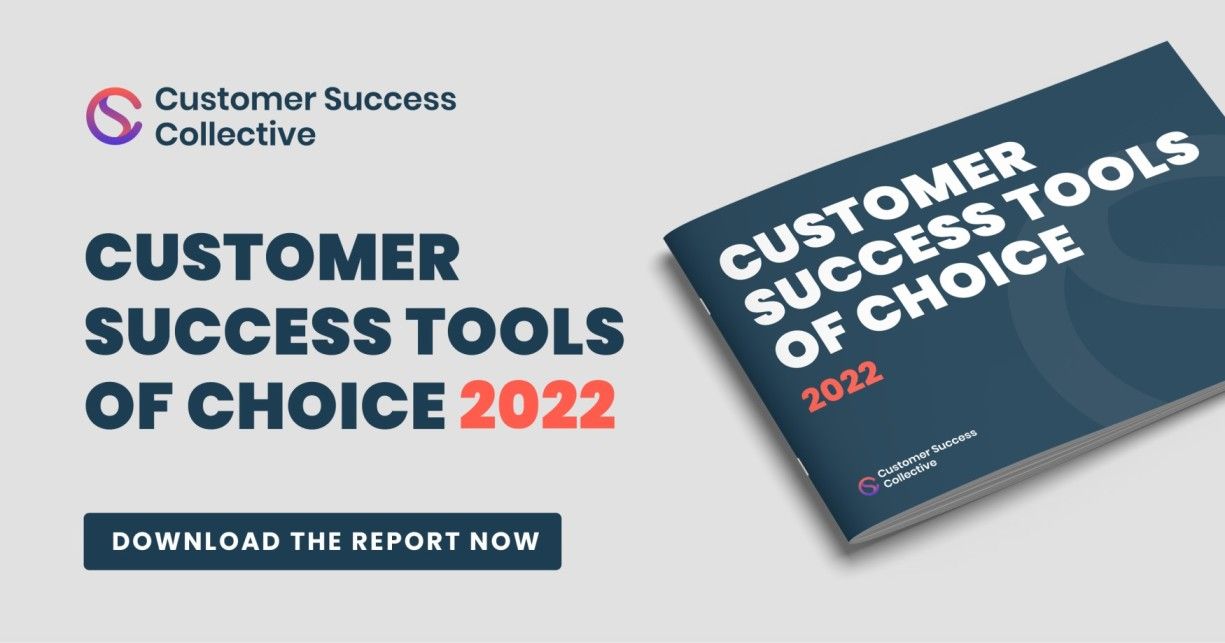
Leveraging tools and creative approaches for customer engagement
Present digestible information
Rather than bombarding customers with lengthy links or large screenshots, consider breaking them down. By segmenting the information and presenting it in digestible chunks, you can ensure better absorption and appreciation by your customers.
Highlight the importance, the potential beneficiaries, and the outcomes. Explaining the context can significantly improve engagement and conversion rates.
The power of video
Videos are engaging and often more effective than text. If you have the means, utilize them as often as possible. Whether it's content you've created or from a marketing team, video provides a dynamic way to explain products, services, or concepts. Highlighting the reasons for purchase through a quick video can help users better understand their decisions.
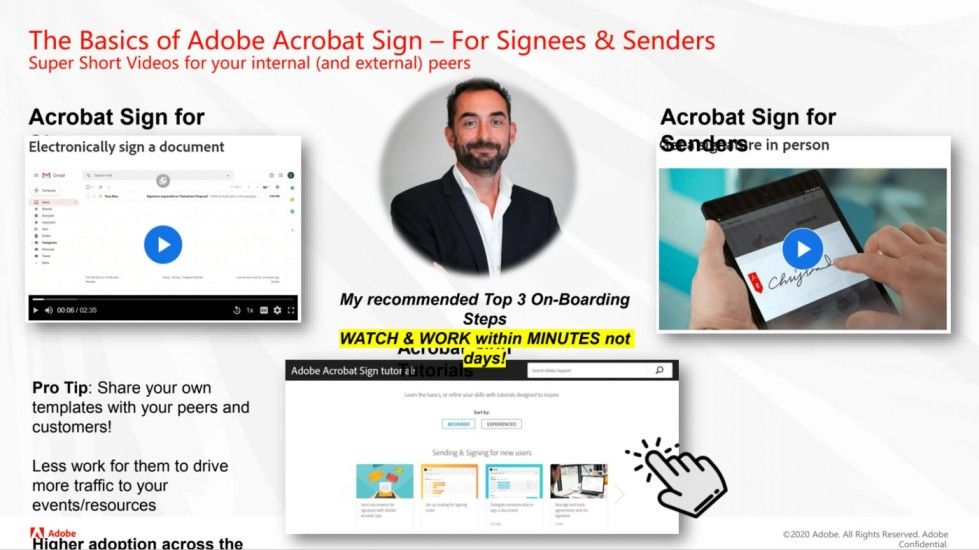
Documenting meetings
Always remember the power of meeting minutes. Not only does this approach keep things organized, but it also shows clients and colleagues that you're attentive and proactive.
By detailing what was discussed, noting tasks, and assigning ownership, you establish control and reliability. Even if you didn't host the meeting, sending out concise minutes can be a game-changer in how you're perceived.
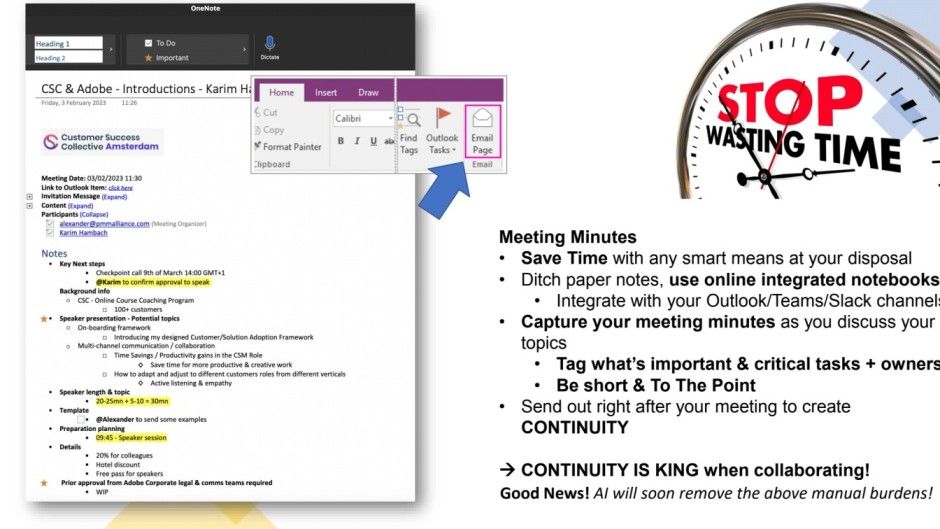
Exploring AI
AI can be a powerful ally in the modern world. Use it to your advantage. Whether it's for creating media or streamlining tasks, AI can remove a significant amount of manual work. Such tools help in visually representing transitions, like moving from traditional to digital modes of operation, as seen in the example with the municipality of Amsterdam. These visuals, combined with creative captions or explanations, can tell a compelling story.
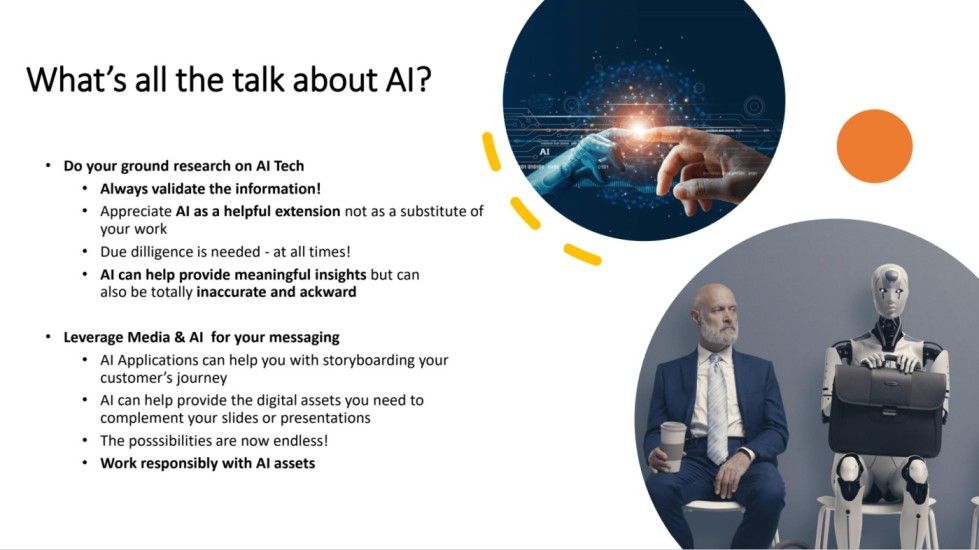
Becoming your own success artist: Unleash your creativity
One of the most potent tools in your arsenal is the element of surprise. When you bring something unexpected to the table, whether it's a unique approach, a novel idea, or a different perspective, you make an indelible mark. Surprising your colleagues and customers ensures they remember you, setting you apart from the crowd.
Every tool, every piece of data, and every process provided by your organization is an asset waiting to be tapped into. These resources aren't just idle instruments; they're the foundation on which you can build your success story. But it's crucial to remember that these tools are just the beginning; they provide the structure, but you bring them to life with your creativity.
Embrace unconventional thinking. Sometimes, the best ideas and solutions come from venturing outside the boundaries of conventional thought. Identify when you're at your most creative and capitalize on those moments. For some, it's the stillness of the morning; for others, it might be the hustle of the afternoon or the serenity of the night.
With the myriad of tools and data at your disposal, there's no longer an excuse to avoid innovation. From using drone footage to showcase an office to employing other inventive methods with clients, the world is your canvas. You are not just a professional; you are an artist, sculpting success stories with a blend of data, tools, and imagination.
Ultimately, our work's objective, beyond the tasks and projects, is to foster happiness, joy, and satisfaction. It's about making an impact, leaving a mark, and, most importantly, eliciting smiles. There's no greater reward than witnessing your colleagues or customers light up with a genuine smile, reflecting their appreciation and joy. In the end, it's these moments that truly count.
Every professional journey is punctuated with challenges and routine tasks. But by interweaving your unique creativity and leveraging the resources available, you can transform any ordinary venture into an extraordinary experience.
So, always remember: seek out those smiles, for they are the true testament to your success.



 Follow us on LinkedIn
Follow us on LinkedIn




